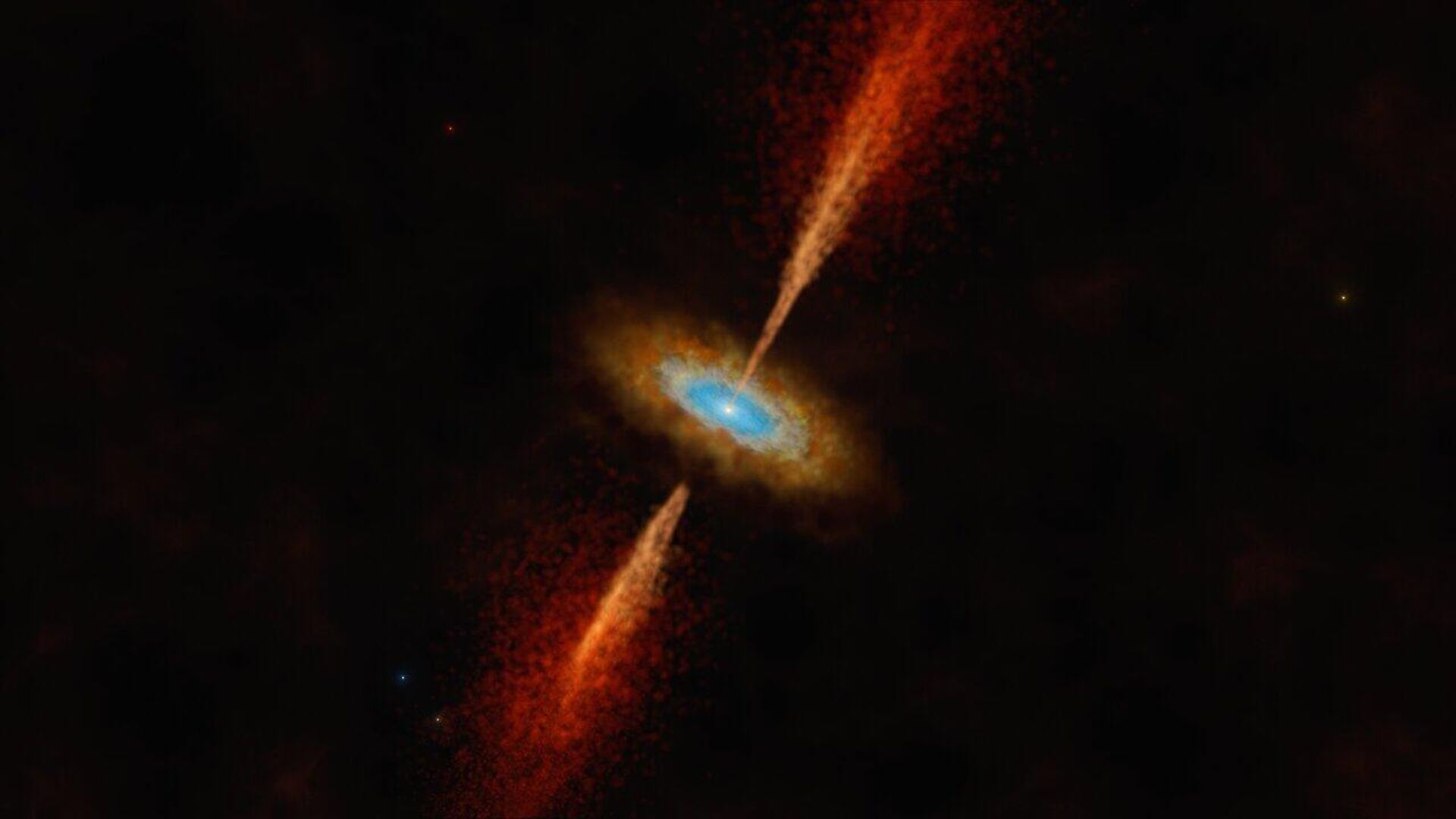https://sputnikglobe.com/20231129/astronomers-discover-first-ever-planetary-nursery-in-another-galaxy-1115292119.html
Scientists Discover First-Ever Planetary Nursery in Another Galaxy
Scientists Discover First-Ever Planetary Nursery in Another Galaxy
Sputnik International
A new generation of powerful telescopes have allowed humans to see even further away in the universe in even greater detail, revealing just how different other parts of the universe can be from nearby space - and how similar, too.
2023-11-29T21:59+0000
2023-11-29T21:59+0000
2023-11-29T21:58+0000
beyond politics
atacama large millimeter/submillimeter array (alma)
galaxy
planet
formation
star formation
https://cdn1.img.sputnikglobe.com/img/07e7/0b/1d/1115292283_0:0:1280:720_1920x0_80_0_0_ce1c26c2a2c796eb76e63fd8b677f09b.jpg
Astronomers have for the first time spotted a protoplanetary disk, the gaseous region around a newly formed star in which its planets will form, in a galaxy other than our own.The infant star and its planet nursery were spotted inside a nearby galaxy, the Large Magellanic Cloud, which is about 163,000 light-years away, using the Atacama Large Millimeter/submillimeter Array (ALMA), a massive radio telescope in northern Chile."We know discs are vital to forming stars and planets in our galaxy, and here, for the first time, we're seeing direct evidence for this in another galaxy,” she added.McLeod said her and her colleagues made the discovery when the Multi Unit Spectroscopic Explorer (MUSE) instrument on ESO's Very Large Telescope (VLT) spotted a jet shooting out of the star - a telltale sign of “disk accretion” - that is, a cloud of dense gas around a star that was slowly condensing into planets, moons, asteroids, comets, and of course, adding to the star’s own girth, all under the steady influence of gravity.In this case, the sign was that different parts of the gas cloud were moving at different speeds, which was apparent to the astronomers as a kind of doppler effect, except with light instead of sound.Our own solar system went through a similar process about 4.5 billion years ago, not long after the sun formed, with the protoplanetary disk giving birth to the eight planets, including Earth.
https://sputnikglobe.com/20231129/astronomers-spot-rare-six-planet-system-that-orbit-star-in-sync-1115288565.html
Sputnik International
feedback@sputniknews.com
+74956456601
MIA „Rosiya Segodnya“
2023
News
en_EN
Sputnik International
feedback@sputniknews.com
+74956456601
MIA „Rosiya Segodnya“
Sputnik International
feedback@sputniknews.com
+74956456601
MIA „Rosiya Segodnya“
do planets form in other galaxies, how far away is another galaxy, how to planets form
do planets form in other galaxies, how far away is another galaxy, how to planets form
Scientists Discover First-Ever Planetary Nursery in Another Galaxy
A new generation of powerful telescopes have allowed humans to see even further away in the universe in even greater detail, revealing just how different other parts of the universe can be from nearby space - and how similar, too.
Astronomers have for the first time spotted a protoplanetary disk, the gaseous region around a
newly formed star in which its planets will form, in a galaxy other than our own.
The infant star and its planet nursery were spotted inside a nearby galaxy, the Large Magellanic Cloud, which is about 163,000 light-years away, using the Atacama Large Millimeter/submillimeter Array (ALMA), a massive radio telescope in northern Chile.
"When I first saw evidence for a rotating structure in the ALMA data, I could not believe that we had detected the first extragalactic accretion disc. It was a special moment," Durham University scientist Anna McLeod, who was the lead author of an article published in Nature on Wednesday, said in a statement.
"We know discs are vital to forming stars and planets in our galaxy, and here, for the first time, we're seeing direct evidence for this in another galaxy,” she added.

29 November 2023, 18:52 GMT
McLeod said her and her colleagues made the discovery when the Multi Unit Spectroscopic Explorer (MUSE) instrument on ESO's Very Large Telescope (VLT) spotted a jet shooting out of the star - a telltale sign of
“disk accretion” - that is, a cloud of dense gas around a star that was slowly condensing into planets, moons, asteroids, comets, and of course, adding to the star’s own girth, all under the steady influence of gravity.
In this case, the sign was that different parts of the gas cloud were moving at different speeds, which was apparent to the astronomers as a kind of doppler effect, except with light instead of sound.
"The frequency of light changes depending on how fast the gas emitting the light is moving towards or away from us," team member and Liverpool John Moores University research fellow Jonathan Henshaw said. "This is precisely the same phenomenon that occurs when the pitch of an ambulance siren changes as it passes you, and the frequency of the sound goes from higher to lower."
Our own solar system went through a similar process about 4.5 billion years ago, not long after the sun formed, with the protoplanetary disk giving birth to the eight planets, including Earth.





